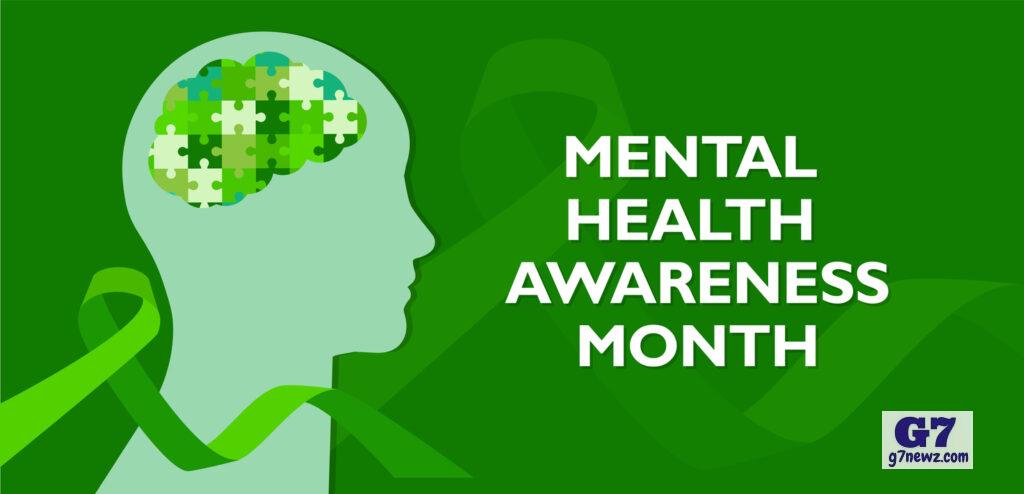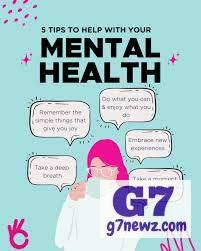In today’s hyper-connected world, technology is an integral part of our daily lives. From smartphones and wearables to virtual workspaces and AI-powered apps, tech-savvy individuals rely heavily on digital tools for productivity, entertainment, and communication. While technology offers convenience, it also presents mental health challenges, including digital fatigue, information overload, and reduced work-life balance.
As we move further into 2025, prioritizing mental well-being is more important than ever. This article explores 10 essential tips for tech-savvy individuals to safeguard their mental health without disconnecting from the digital world.
Embrace Digital Minimalism
What Is Digital Minimalism?
Digital minimalism is a lifestyle philosophy that promotes intentional technology use by reducing unnecessary screen time. For tech-savvy individuals, who often juggle multiple devices and platforms, practicing digital minimalism can reduce cognitive overload and stress.

How to Implement It:
- Declutter Your Digital Space: Unsubscribe from irrelevant email lists, mute non-essential notifications, and delete unused apps.
- Set Screen Time Limits: Use tools like Apple’s Screen Time or Google’s Digital Wellbeing to monitor and reduce excessive usage.
- Prioritize Purposeful Tech Use: Choose tech activities mindfully—schedule time for meaningful digital interactions instead of endless scrolling.
Practice Mindful Tech Consumption
The Impact of Mindless Scrolling
Mindless social media scrolling and constant news consumption can lead to anxiety, sleep disturbances, and information fatigue. Mindful tech consumption encourages you to be more aware of your digital habits.
How to Stay Mindful:
- Curate Your Feed: Follow positive, educational, or uplifting content. Unfollow or mute accounts that create stress or comparison.
- Use Apps with Purpose: Instead of browsing randomly, engage with specific content that inspires or educates you.
- Try the 20-Second Rule: When tempted to mindlessly scroll, pause for 20 seconds and ask yourself if the activity is meaningful.
Prioritize Tech-Free Zones and Hours

Why You Need Tech-Free Spaces
Tech-savvy individuals often blur the lines between work and personal time, making it harder to disconnect. Creating tech-free zones and hours helps restore work-life balance.
Ways to Create Boundaries:
- Tech-Free Bedroom: Avoid using phones, laptops, or tablets in your bedroom. Replace them with books or mindfulness journals.
- No-Screen Mornings and Evenings: Start and end your day without screens for at least 30 minutes. Use this time for meditation, journaling, or stretching.
- Weekend Digital Detox: Commit to one screen-free day per week to recharge your mental energy.
Use Technology to Support Mental Health
The Power of Mental Health Apps
While tech can be a source of stress, it can also enhance mental wellness when used strategically. In 2025, mental health apps have become smarter, offering personalized support and real-time interventions.
Tech-Savvy Solutions:
- Meditation and Mindfulness Apps: Use platforms like Headspace, Calm, or Insight Timer for guided relaxation and stress relief.
- Mood-Tracking Tools: Apps such as Daylio or Moodfit help you log emotions, track triggers, and identify patterns.
- AI-Powered Therapy Platforms: Platforms like Woebot and Wysa offer conversational therapy, providing support through AI-powered chats.
Optimize Your Digital Workspace for Well-Being
Why Your Digital Setup Matters
A poorly optimized workspace can lead to eye strain, back pain, and mental fatigue, which can affect productivity and mood.
Tips for a Healthier Digital Setup:
- Ergonomic Desk and Chair: Invest in an ergonomic chair and adjustable desk to support good posture.
- Blue Light Filters: Use blue light blocking glasses or screen filters to reduce eye strain during extended screen time.
- Digital Break Reminders: Use tools like Stretchly or Time Out to remind you to take breaks, stretch, and rest your eyes.
Manage Information Overload
The Overload Dilemma
Tech-savvy individuals often face information overload due to constant exposure to emails, news updates, and social media notifications. This can lead to decision fatigue, stress, and burnout.
How to Reduce Information Overload:
- Limit News Consumption: Stick to trusted sources and schedule a specific time for reading the news instead of checking constantly.
- Use Information Aggregators: Rely on tools like Feedly or Pocket to organize content, preventing scattered information overload.
- Batch Notifications: Turn off real-time notifications and batch-check your messages and emails at set intervals.
Incorporate Movement and Stretching
Combat Sedentary Tech Lifestyles
Tech-savvy individuals often spend hours sitting at their desks, which can contribute to physical stiffness, poor circulation, and mental fatigue. Regular movement breaks can significantly improve both physical and mental health.
Simple Ways to Stay Active:
- 5-Minute Desk Stretches: Perform neck rolls, shoulder shrugs, and wrist stretches every hour.
- Walk-and-Talk Calls: Take business calls while walking to incorporate light movement into your day.
- Use Fitness Reminders: Apps like Stand Up! or Workrave remind you to move periodically.

Leverage Tech for Better Sleep
Tech-Induced Sleep Disruptions
Excessive screen exposure, especially before bedtime, disrupts melatonin production, leading to poor sleep quality. For tech-savvy individuals, sleep hygiene is essential.
How to Improve Sleep:
- Night Mode and Blue Light Filters: Activate night mode or use apps like f.lux to reduce blue light exposure in the evening.
- Tech-Free Wind-Down Routine: Turn off screens at least 60 minutes before bedtime. Instead, read a book or practice relaxation techniques.
- Sleep-Tracking Devices: Use wearables like Oura Ring or Fitbit to monitor sleep patterns and improve sleep hygiene.
Engage in Digital Social Wellness
Meaningful Online Connections
While social media can sometimes cause stress, it can also foster meaningful connections when used intentionally. For tech-savvy individuals, engaging in positive digital interactions is key to mental well-being.
Tips for Healthy Digital Connections:
- Join Positive Online Communities: Participate in groups related to hobbies, wellness, or self-improvement, avoiding toxic or stressful platforms.
- Limit Doomscrolling: Be mindful of negative news cycles and unfollow accounts that promote sensationalism or misinformation.
- Prioritize Real-Time Interactions: Use technology to schedule video calls or in-person meetups with loved ones instead of relying on texts alone.
Regular Digital Detox and Mindful Breaks
Why You Need a Digital Detox
Constant exposure to screens can overwhelm your mind and lead to digital burnout. Taking intentional breaks from technology is essential for mental clarity and emotional balance.
How to Detox Effectively:
- Tech-Free Weekends or Evenings: Designate tech-free times to recharge and engage in offline activities.
- Mindful Hobbies: Replace screen time with hobbies like reading, painting, or cooking, which promote relaxation.
- Nature Escapes: Plan regular nature walks or outdoor activities to disconnect from technology and reset your mental state.
In 2025, the fusion of technology and daily life is inevitable, but safeguarding your mental health is essential. By practicing digital minimalism, creating tech-free zones, optimizing your workspace, and using technology mindfully, tech-savvy individuals can thrive without sacrificing their well-being.
Incorporating these 10 mental health tips will help you maintain balance, reduce stress, and foster a healthier relationship with technology—empowering you to stay both tech-savvy and mentally resilient.




